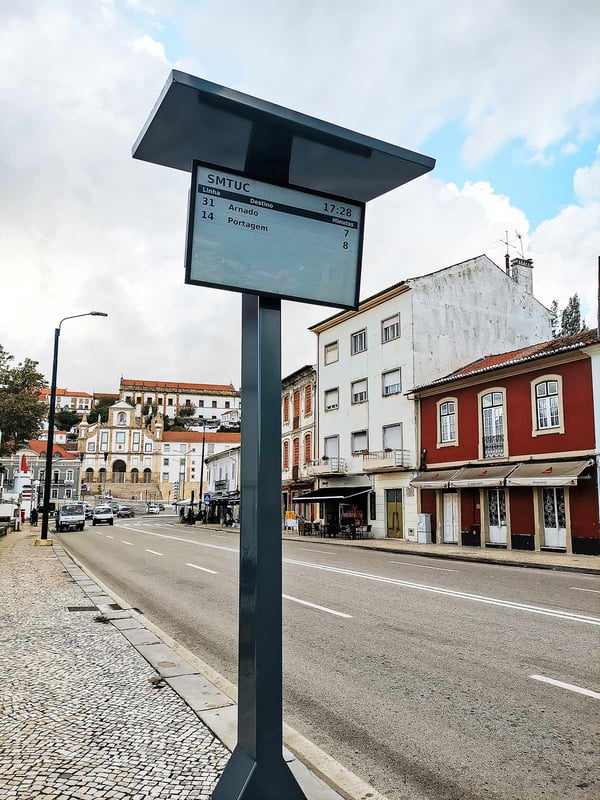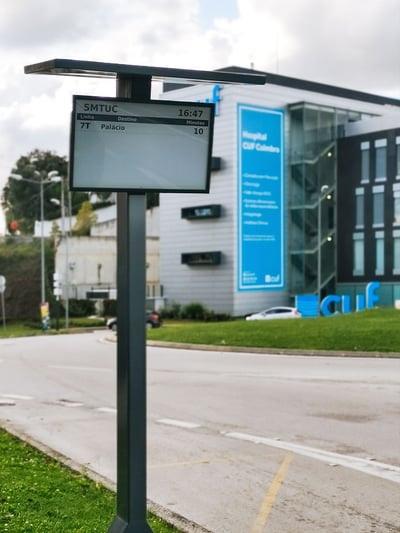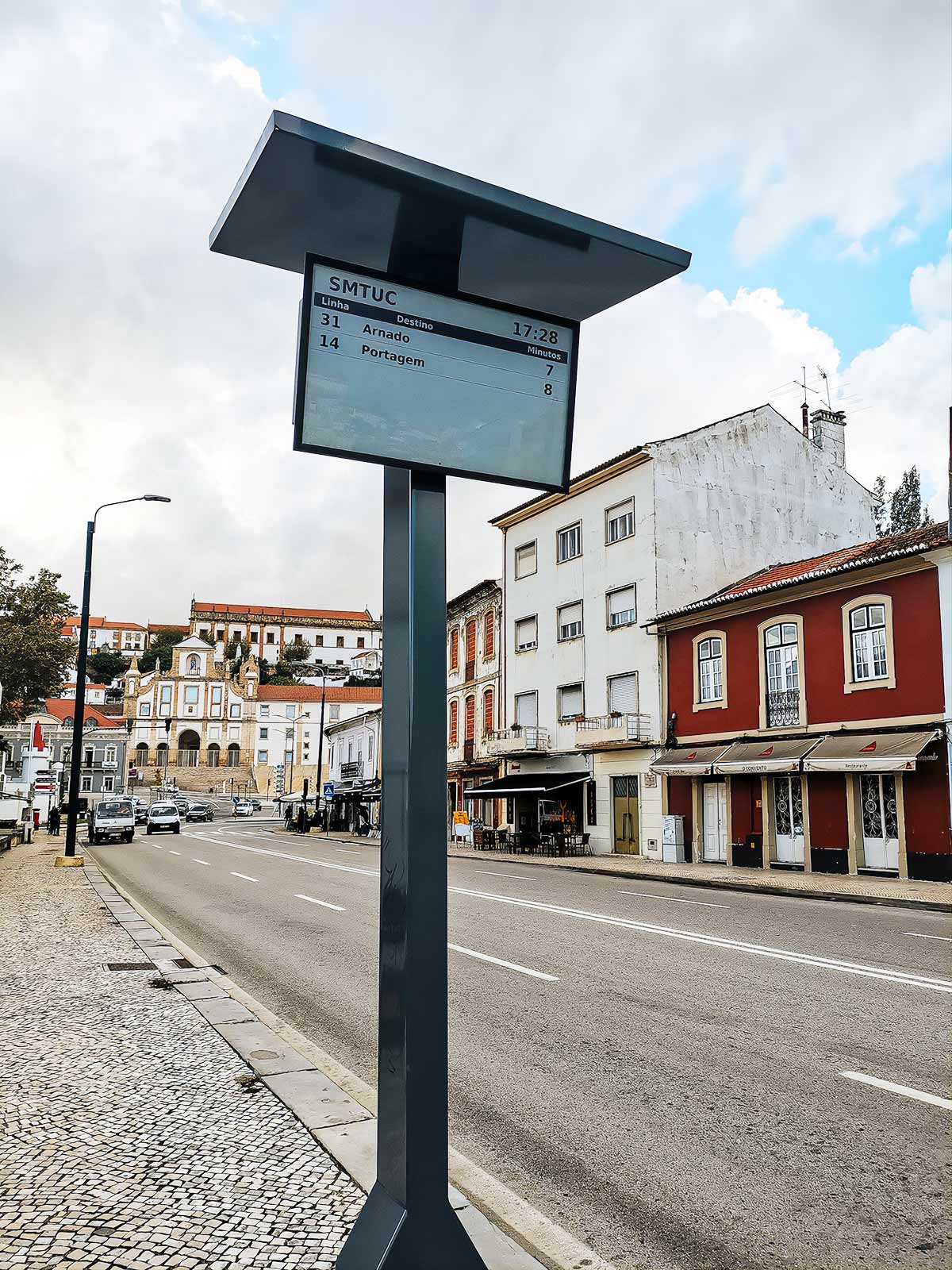This post is a special feature from Visionect. You can read the original blog post on their blog at: https://www.visionect.com/blog/coimbra-the-city-of-the-students-whose-public-transport-runs-on-sunlight/.
Read how the Portugese educational metropolis is bringing public transport information to locations without access to the power grid.
Tired of gloomy weather? Not if you live in Coimbra, Portugal, a city which basks in sunlight for close to 1,900 hours each year. That’s up to 10 hours of sunshine every day, enough to boost the serotonin of over 21,000 students that call the location of Portugal’s oldest university their temporary home.
And enough to power the amazing public transport information system that helps them navigate the Portugese educational metropolis.
No power, no information?
The City of Coimbra is connected by an extensive bus (and trolleybus) network, the Coimbra Municipality Urban Transport Services or the SMTUC. Its 120 public transport lines cover over 2,000 kilometres, with 150 buses busy ferrying passengers to and from, including most of the student body, pausing at 1,350 bus stops.
No wonder that in Coimbra, the fourth-largest urban centre in Portugal, on an average day a commuter will spend anywhere from 35 to over 120 minutes using the public transit, waiting at a stop or station from 12 to over 20 minutes. And no wonder that many commuters found it burdensome that some of these stops – the more peripheral ones, where access to the power grid was not readily available – could not be equipped with real-time arrival info.
Not until fully autonomous solar-powered electronic paper displays from Visionect were introduced three years ago.
Overcoming feasibility issues
“The city of the students” can now boast 25 completely self-sustainable bus stops – 15 installed in 2017 and 10 in 2020, with more to follow – all available in a powerful XXL format 32-inches in diagonal, and all powered by solar energy, a natural resource that Coimbra has in abundance.

It makes Coimbra one of the first cities in Portugal to be able to install fully functional public transport digital displays in locations where extending the power grid would not be economically feasible and joining e-paper success stories all around the world.
This smart digitalization of remote public transport stops in Coimbra was made possible thanks to Visionect technology and the vision of SMTUC and local fleet management powerhouse, POWERQUBIT. The unprecedented ease of installation is made possible through the Visionect-optimised low power properties of electronic paper, bringing live passenger information to locations unimaginable before.

Using 99 % less power than LCD, the screens can be rolled out with just a few bolts, powered by a solar cell and connecting via the cellular network. It makes displaying live-content as easy as plugging in POWERQUBIT’s CMS into Visionect’s Software Suite, in charge of all operational aspects of the sign.
The future is bright!
Coimbra’s culture revolves around students, explains Luis Antunes, CEO of POWERQUBIT. Live passenger information across the whole of Coimbra’s public transport network answers the students’ demand for modernity, bringing higher passenger satisfaction, a better customer experience, fewer complaints, improved accuracy of bus arrival predictions and an increase in service uses.
And it does so, happily adds Antunes, with reduced operating costs for the public transport provider and a future-proof, sustainable platform. After all, says the POWERQUBIT CEO, “Imagination seeds. Curiosity, work and persistence grows.”


Leave Comment